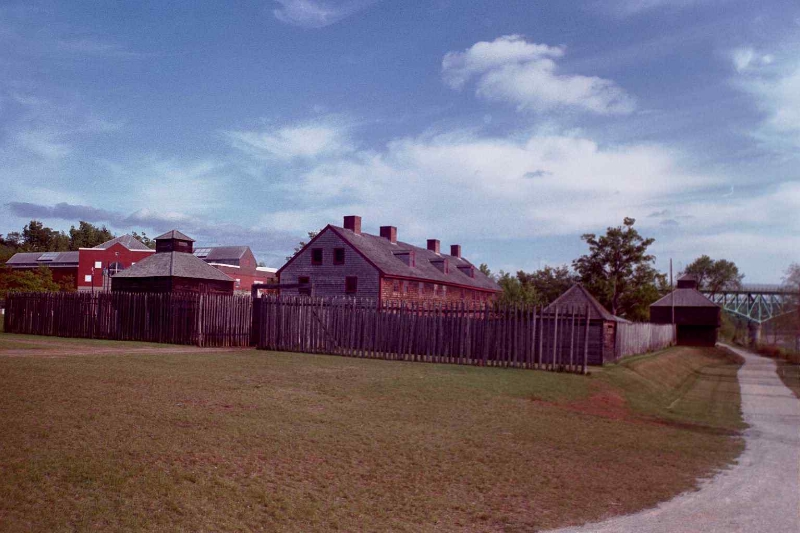In 1625, the Plymouth Colony Pilgrims sailed to the Kennebec River in hopes of establishing a trading relationship with area Indians. By 1628 the Pilgrims were operating a year-round trading post just south of where Fort Western now stands. The Pilgrims made the voyage in a 38-foof open-hulled, single-masted sailing vessel called a shallop.
A replica of that vessel was designed from information about other shallops of the period and from the notes on its creation mentioned in William Bradford’s history of the Colony. In 2003 the Elizabeth Tilley, named for the original, sailed from Plymouth, Massachusetts and arrived in Augusta at Fort Western on August 7th.
In 1628 Augusta was a trading post called Cushnoc. As interest in trade and protecting the traders expanded, Fort Western was constructed in 1754 under the command of Captain James Howard in what is now Augusta on the east side of the Kennebec River. It was financed by the Kennebec Proprietors, a Boston-based land company seeking to settle the lands along the Kennebec River that had been granted to the Pilgrims. The company and the Province of Massachusetts were interested in expanding their influence in the area as part of an effort by Britain and her colonies to take final political control of North America and to sever the ties between the Abenaki and the French in Canada.
Located at the head of navigation on the river, Fort Western served as a fortified storehouse in support of Fort Halifax, located 17 miles north. Supplies were shipped from Boston as many as four times a year, unloaded at Fort Western, then taken by flat-bottomed boat, against a strong river current, to Fort Halifax.
James Howard was the town’s first permanent resident. At Fort Western alewives were shipped down the Kennebec by the Howard family who operated a store within the fort. Three account books survive from the mid 1700s to the early 1800s.
The secure area attracted trappers and, eventually, other permanent settlers. After Benedict Arnold’s Quebec Expedition left on its northward trek on September 24,1775, the Fort’s military role had ended, though its function as a trading post survived through a store located on the site.
Old Fort Western, whose main house is a National Historic Landmark and America’s oldest surviving wooden military building, was named for Thomas Western, of Sussex, England, a friend of Governor William Shirley.

 <== To Quebec To Beginning ==>
<== To Quebec To Beginning ==>
More Videos!
Additional resources
Maine Archives and Museums Newsletter. August 2003. p. 16.
Maine State Planning Office, “History of the Edwards Dam Facilities. http://www.state.me.us/spo/sp/edwards/morehistory.php (accessed September 14, 2005.
Old Fort Western Museum, Augusta, Maine. http://www.oldfortwestern.org/
“The Shallop Elizabeth Tilley” at http://www.pilgrimjohnhowlandsociety.org/shallop_elizabeth_tilley.shtml (accessed September 12, 2005).



